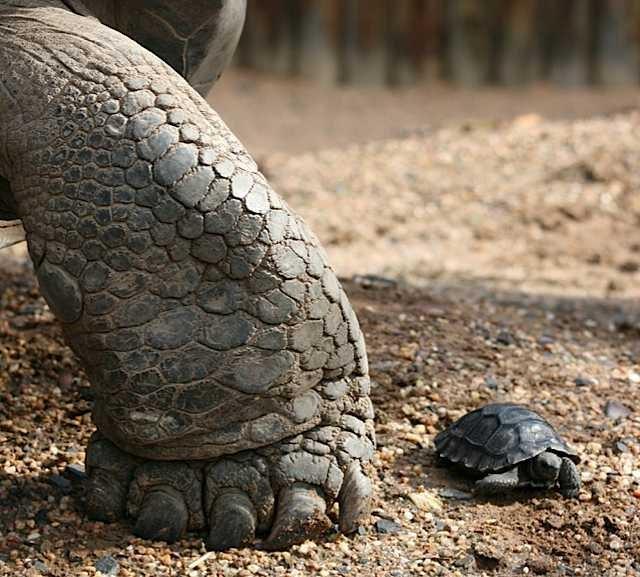
2 minute read
Galapagos Giant Tortoise
The Galapagos Giant Tortoises: A Wildlife Success Story
By Chloe’ Lewis
For the first time in 150 years, the Galapagos welcomed new baby tortoise hatchlings on the shores of Pinzon Island. After 50 long, tire less years of conservation efforts, saddleback giant tortoises have officially shown researchers they have successfully and seemingly permanently established a growing, stable population in the Galapagos. This is arguably the wildlife success story of last year. Researchers made the awe -inspiring discovery in early December of 2014, when they stumbled upon ten freshly hatched baby tortoises. This finding is evidence that the small giant tortoise population on the island is officially reproducing independently in the wild. Scientists suspect there are many more hatchlings that are obscured by their camouflage and small stature. Given the fact that researchers are said to have spotted a total of 300 adult tortoises during their trip, they estimate more than 500 are currently living on the island.
Of all of the native species of the Galapagos, giant tortoises were the most devastated after rat invasions and human threats. One of the giant tortoise’s most amazing adaptations — its ability to survive without food or water for up to a year — was also the indirect cause of their demise. Buccaneers, whalers, and fur traders began massively overexploiting the animals by storing live giant tortoises in the holds of their ships. Tortoises were also exploited for their oil, which was used to light the lamps of Quito. Two centuries of exploitation resulted in the loss of between 100,000 to 200,000 tortoises. Three of the four original species are extinct. One species lost its last member, dubbed Lonesome George, in June of 2012.
With the establishment of the Galapagos National Park and the Charles Darwin Foundation in 1959, a review of the status of the tortoise populations was underway. It was discovered that only 11 of the 14 original populations remained. Most of them were endangered if not already on the brink of collapse. Conservationists adopted a strategy to extend the tortoises’ longevity, with the goal keeping some of the remaining old adults alive until efforts could save their unstable species.
In the 1960s the Galapagos National Park and associates set out to save and protect the remaining 100 giant tortoises the islands had left. This led to 50 years of collecting eggs, raising hatchlings in captivity, protection against early pirates and whale hunters, and drastic rat-eradication efforts. In 2012, conservationists waged an aggressive campaign for a pioneering operation to eradicate the invasive rat species on Pinzon Island by distributing poison via helicopter. The poison would only attract rats. This was a major turning point for the island’s small and struggling tortoise population. With the invasive rat species gone, the adult tortoises now had the opportunity to breed successfully for the first time. This has been a major success, and we look forward to increased populations of giant tortoises once again.
http://www.nature.com/nature/journal/v517/n7534/full/517271a.html
https://www.thedodo.com/galapagos-tortoises-spotted-945526940.html
http://www.galapagos.org/about_galapagos/tortoises/
http://blogs.discovermagazine.com/d-brief/2015/01/19/galapagos-tortoises-comeback-rat-eradication/#.VNjoaiysQYh3










